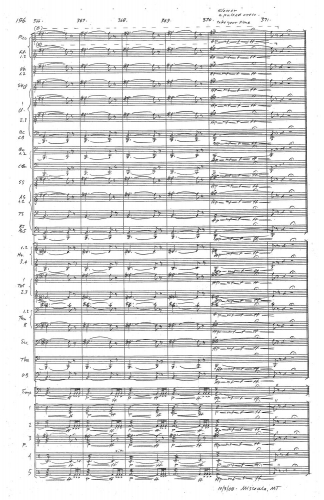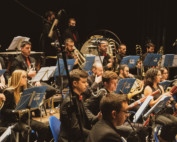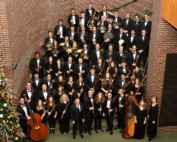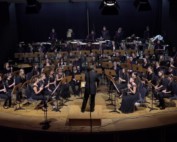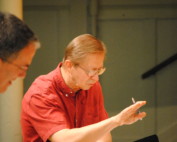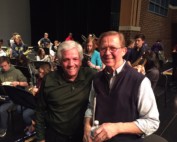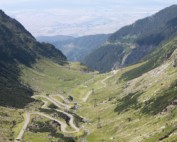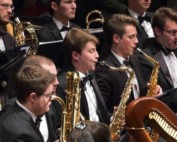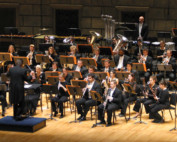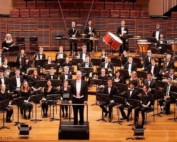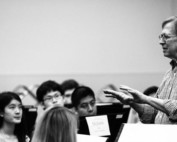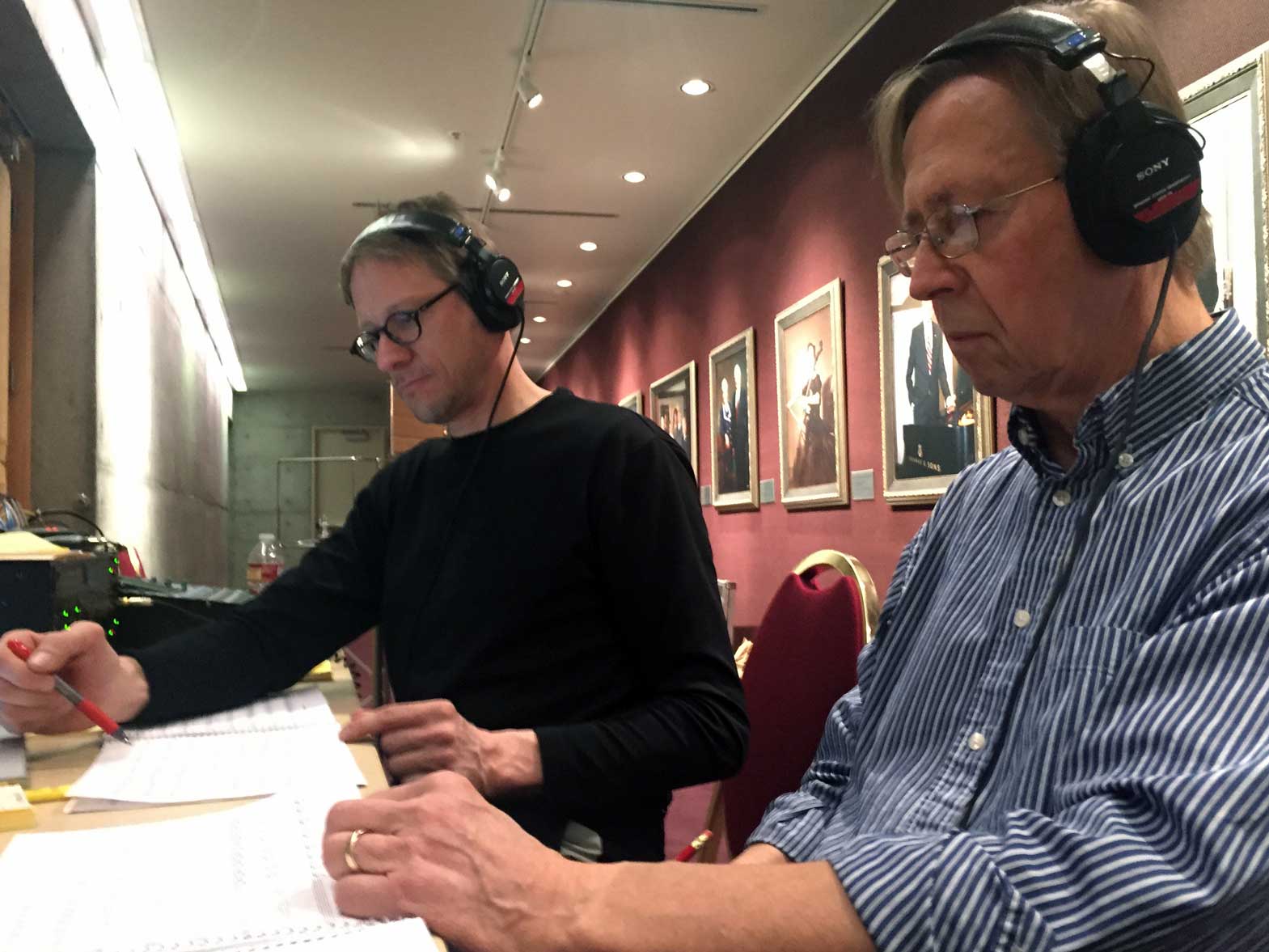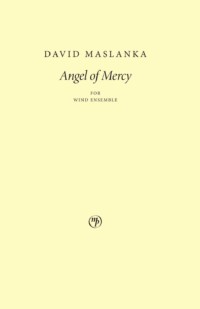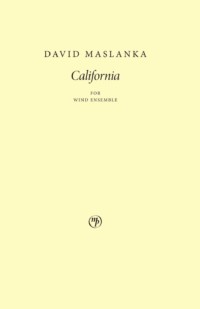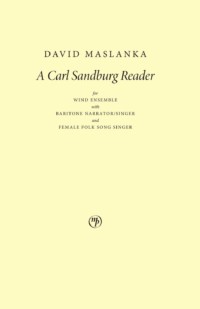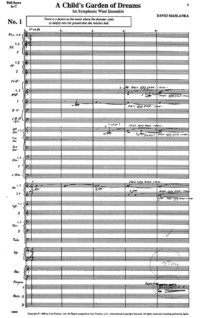Project Description
Wind Ensemble
2008
42 min.
Listen Now
The United States Army Band, “Pershing’s Own”
live recording
The St. Olaf Band, Timothy Mahr, cond.
On the album Inner Visions, The Music of David Maslanka (2009)
Instrumentation
Picc Fl-2 Ob-2 E♭Cl B♭Cl-3 BCl CbCl Bsn-2 Cbsn SSx ASx-2 TSx BSx BassSx | Hn-4 B♭Tpt-3(1»Picc Tpt) Tbn-2 BTbn Euph Tuba DB | Pno Timp Perc-5
- Piccolo
- Flute (2)
- Oboe (2)
- Clarinet in E♭
- Clarinet in B♭ (3)
- Bass Clarinet in B♭
- Contrabass Clarinet in B♭
- Bassoon (2)
- Contrabassoon
- Soprano Saxophone
- Alto Saxophone (2)
- Tenor Saxophone
- Baritone Saxophone
- Bass Saxophone
- Horn in F (4)
- Trumpet in B♭ (3) (1 dbl Piccolo Trumpet)
- Trombone (2)
- Bass Trombone
- Euphonium
- Tuba
- Double Bass
- Piano
- Timpani
- Required Percussion (5 players)
- Orchestra Bells (2)
- Marimba
- Triangle (1 sm., 2 lg.)
- Suspended Cymbal (1 sm., 1 med., 5 lg.)
- Vibraphone
- Snare Drum (2)
- Bass Drum (2)
- Tenor Drum (3)
- Chimes (2)
- Xylophone
- Crotales
- Tam-tam (2)
- Crash Cymbals
- Slap Stick
- Tom-tom (med.)
- Bongos
Movements
- Moderate – Very fast
- Moderate
- Moderate – Very fast – Moderate – Very fast
Commissioned by
- Bobby Adams – Stetson University
- Bruce Ammann – Augustana College
- John Bell – Southern Illinois University Edwardsville
- Bob Belser – University of Wyoming
- Cody Birdwell – University of Kentucky
- Steve Bolstad – James Madison University
- Andrew Boysen University of New Hampshire
- John Carmichael – University of South Florida
- Rick Clary – Florida State University
- Mitch Fennell – California State University, Fullerton
- Bobby Francis – Texas Christian University
- Tom Frascillo – University of Southern Mississippi
- Larry Gookin – Central Washington University
- Gary Green – University of Miami
- Gregg Hanson – University of Arizona
- Joe Hermann – Tennessee Tech
- Timothy Holtan – United States Military Academy
- Ronald Hufstader – University of Texas at El Paso
- Nipatdh Kanchanahuta – Kasetsart University, Bangkok, Thailand
- John Locke – University of North Carolina, Greensboro
- Tim Mahr – St. Olaf
- Jim Major – Illinois State University College of Fine Arts
- Andy Mast – Lawrence Conservatory
- Doug Monroe – Langley Air Force Band
- Steve Parsons – Illinois State University School of Music
- Steve Peterson – Ithaca College
- Nate Rinnert – Mansfield University
- Dana Rothlisberger – Towson State University
- Mark Scatterday – Eastman School of Music
- Martin Seggelke – University of Minnesota, Morris
- Steve Steele – Illinois State University
- Tau Beta Sigma – Illinois State University
- Reed Thomas – Middle Tennessee State University
- Ken Van Winkle – New Mexico State University
- Frank Wickes – Louisiana State University
- Kraig Williams – University of Memphis [/fusion__toggle]
Program Note
Symphony No. 8 is in three distinct movements, bur the musical layout suggests a single large-scale panoramic vista.
I began the composition process for this symphony with meditation, and was shown scenes of widespread devastation. But this music is not about the surface of our world problems. It is a response to a much deeper vital creative flow which is forcefully at work, and which will carry us through our age of crisis. This music is a celebration of life. It is about new life, continuity from the past to the future, great hope, great faith, joy, ecstatic vision, and fierce determination.
The old is continually present in the new. The first movement touches the “Gloria” from my Mass: “Glory to God in the highest,” whatever that may mean to you: the power of the universe made manifest to us and through us.
The second movement is a large fantasia on the old Lutheran chorale melody Jesu meine Freude (Jesus My Joy). The life of Christ is one powerful image of the high creative: being willing to be broken to receive the new; giving oneself up entirely so that a new idea can be born. The old form of the organ chorale prelude underlies this movement – new language out of the old.
The third movement is a music of praise and gratitude for all that is. It can be traced to the very end of the favorite old hymn tune All Creatures of Our God and King – the part with the joyous descending major scale where all the bells ring out. I recently used this tune for a set of variations in a piece called Unending Stream of Life, a name which could also be a fitting subtitle for this new symphony.
Further Reading
From the Maslanka Archive – No. 40, World Premiere of Symphony No. 8
From the Maslanka Archive features media and stories of David's life and work. This week, we are excited to feature Alex Teater's signed program and tenor saxophone sheet music from the World Premiere of David's Symphony No. 8.
Maslanka Weekly: Best of the Web – No. 122, New Performances of Popular Symphonies
Maslanka Weekly highlights excellent performances of David Maslanka’s music from around the web. This week, we are excited to feature amazing new performances of three of David's most popular symphonies: Symphony No. 4, Symphony No. 7, and Symphony No. 8.
Maslanka Weekly: Best of the Web – No. 121, Michigan State University Bands
Maslanka Weekly highlights excellent performances of David Maslanka’s music from around the web. This week, we feature various ensembles from Michigan State University playing recent performances of David's music: Symphony No. 5, Hymn for World Peace, and Symphony No. 8.
Maslanka Weekly: Best of the Web – No. 114, Schwäbisches Jugendblasorchester
Maslanka Weekly highlights excellent performances of David Maslanka’s music from around the web. This week, we feature Toni Scholl and the Schwäbisches Jugendblasorchester des Allgäu-Schwäbischen Musikbunde in a new live performance of Symphony No. 8.
From the Maslanka Archive – No. 34, Julian Velasco’s Interview of Gary Green
From the Maslanka Archive features media and stories of David's life and work. This week, we are excited to feature Julian Velasco's interview of Gary Green from the Wharton Center in East Lansing, MI from October 24, 2017.
From the Maslanka Archive – No. 20, David at Lawrence University
From the Maslanka Archive features media and stories of David's life and work. This week, we are excited to feature pictures from David's residency at Lawrence University with Andrew Mast and the Lawrence University Wind Ensemble in 2010.
Maslanka Weekly: Best of the Web – No. 86, Gary Green
Maslanka Weekly highlights excellent performances of David Maslanka’s music from around the web. This week, we feature three of David’s compositions that Gary Green championed: Symphony No. 8, Symphony No. 4, and Symphony No. 3.
Maslanka Weekly: Best of the Web – No. 66, Vistas
Maslanka Weekly highlights excellent performances of David Maslanka’s music from around the web. This week, we feature three of David’s compositions that emulate various kinds of vistas: Symphony No. 8, A Child's Garden of Dreams, and Symphony No. 6.
Maslanka Weekly: Best of the Web – No. 37, New Performances of Favorite Works
Maslanka Weekly highlights excellent performances of David Maslanka’s music from around the web. This week, we feature three new performances of favorite works: Symphony No. 8, Symphony No. 5, and Hell's Gate.
Maslanka Weekly: Best of the Web – No. 33, The Eastman Wind Ensemble
Maslanka Weekly highlights excellent performances of David Maslanka’s music from around the web. This week, we feature the Eastman Wind Ensemble in rousing performances of Symphony No. 8, Mvt. I, Tears, and Symphony No. 2.
Maslanka Weekly: Best of the Web – No. 1, Down Under
Maslanka Weekly highlights excellent performances of David Maslanka’s music from around the web. This week, a fantastic Symphony No 8, Hymn for World Peace, and Requiem.
David Maslanka: Works for Younger Wind Ensembles
Here are more than twenty works for wind ensemble, arranged in approximate ascending order of difficulty, with commentary by David Maslanka
Recording the Wind Ensemble Music of David Maslanka
Mark Morette of Mark Custom Recording shares his extensive experience in recording wind ensembles.
